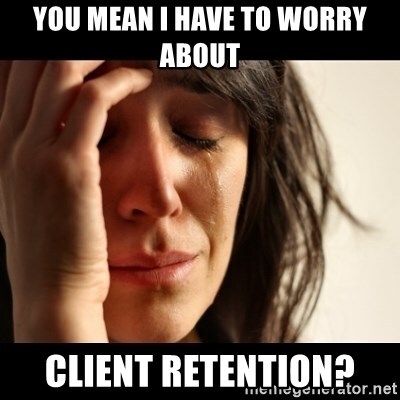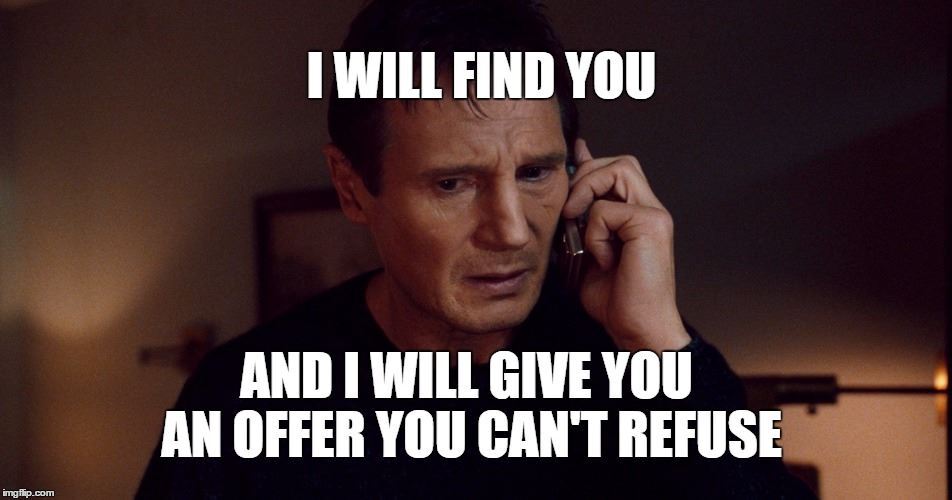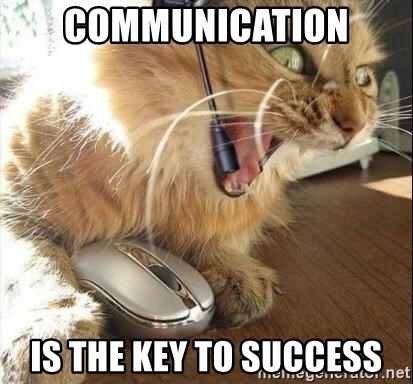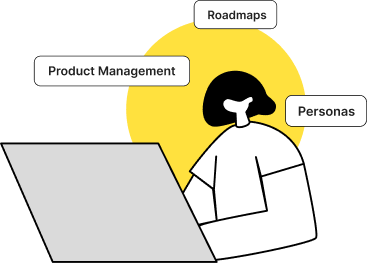In today’s competitive market, recruiting new clients is essential. It’s never good to lose consumers. Losing clients equals losing money. We call it the churn rate in SaaS. A churn rate is defined as the rate at which customers discontinue doing business with a company. It is usually represented as the proportion of service users that cancel their subscriptions within a specific period. It is also the rate workers quit their positions within a particular time frame. To develop its customer base, a company’s growth rate must outpace its attrition rate.
Retention is the new growth, so if your company suffers from retention, be prepared to pivot and try something new. You won’t want to think about what may happen if you don’t. Understanding how to boost user retention for SaaS is becoming more critical. SaaS firms concentrating on maintaining current customers rather than gaining new ones will have a stronger future.

What is Customer Retention?
Customer retention is a statistic that quantifies the number of customers that have been kept over time. In a subscription company, a better retention percentage means more clients paying for your service over time. This leads to increased client lifetime value (LTV) and consistent revenue retention and growth. It also enables better profit margins, particularly in SaaS, where operational expenses are substantially lower. This makes client retention critical for creating long-term, high-growth SaaS firms.

Retention is always complex, and there is no one-size-fits-all solution to reduce turnover. You’ll need a multi-pronged approach, such as the one detailed here.
Understanding the customer requirements
Understanding your client’s needs is a critical approach for any SaaS company. If your SaaS solution does not meet the needs of your consumers, they will leave within a short amount of time. Customers’ expectations must be understood and aligned with the SaaS solution’s expected result. You must ultimately provide this to attain or maintain a better client retention rate. It is critical to collect this data or information before beginning the onboarding process, which includes asking your consumers about their wants or goals. This allows you to create a comprehensive strategy to handle your client’s needs and concentrate on the intended results before they even begin using your SaaS product.

| Strategy | Description |
| Define Your SaaS Retention | There are many approaches to defining retention for your SaaS product. For example, you must consider if client retention is oriented toward paying for access to the SaaS product. Or must clients be active on the platform to be retained? You must respond to these questions and make your decisions. Also, you must prepare everything ahead of time to ensure everything runs smoothly and on schedule. |
| Set Customer Retention Objectives | It is critical to grasp the client retention rate correctly. You must determine a high consumer retention rate. It is unique to your SaaS product or company and your objectives. You desire a 100% retention rate, but, to achieve this, you must make ongoing attempts to enhance your SaaS product, i.e., make it more user-friendly. You might begin by determining your current retention rate at various periods after the purchase. However, it depends on the SaaS product and your membership term. A customer relationship manager, for example, may examine data every month, but a sharing SaaS provider may examine retention rates daily. Customer retention objectives might also differ depending on the user. As a result, it is critical to define new targets for new customers, power users, and clients with the most excellent customer lifetime value. |
| Improve the Onboarding Process | For SaaS organizations; onboarding is a critical stage. When a company’s turnover rate is high, it usually opts for onboarding. The onboarding process must make SaaS product adoption seem straightforward while assisting clients in experiencing benefits from utilizing the SaaS product. Remember that the perceived value might differ from one consumer group to the next. You must concentrate on client segmentation to help you perform the onboarding process correctly. You may make it more tailored and relevant to the clients this way. You may do this by emphasizing the value-added aspects of your SaaS solution. Allow your consumers to comprehend the characteristics of your product so that they may achieve their objectives more rapidly. You must be honest and give clear instructions on your SaaS product, such as what it does and how your consumers may utilize it quickly and effectively. You must have these requirements in place to improve your SaaS client retention rates even more. |
Construct a Customer Communication Protocol

Communication is an essential component of any client retention strategy. Remind your clients that your firm and customer support staff are here to assist them. You must reassure them that you are there to help them through the process of properly using your SaaS solution.
When you communicate and interact with your customers, you can supplement important data that you collect through your analytics platform or tool. Remember that contact with your consumers is determined by a few key criteria. When a consumer contacts you, it is your job to respond swiftly. Interact with them once a week to see whether their issues have been resolved using the remedies you previously offered. This is to ascertain “how they are doing.” It is an excellent chance to communicate with your consumers and give exceptional customer service.
| Strategy | Description |
| Avoid conducting surveys on service tickets | Feedback on the customer care resolution experience may help you improve your process, but it can also irritate the user in unexpected ways. Put yourself in the shoes of the users. You encountered a problem and went to great lengths to remedy it. Fortunately, (assuming) the resolution procedure went well. However, the team continues to bug you to provide feedback on your experience. It’s like the obnoxious reporter who asks a crash victim about their rescue as soon as they’re rescued. The time and location are crucial in encouraging children to speak. |
| Maintain a Consistent Interaction Schedule | Consider subscribing to a service and only hearing from them when money is deducted from your bank account. Isn’t it unpleasant? You must make the user aware of the value you give via your interactions so that they do not associate you with the sense of losing money for nothing. This is why constant customer connection is essential for retention. Even if you aren’t constantly sending content-heavy emails, contact them once in a while to say “hello” or to check how they are getting along with the product. It demonstrates to consumers that you care about them beyond money and want to assist them reach their objectives. |
| Send Targeted Engagement Suggestions | To engage users further, you can set up automatic emails that are triggered when they take a certain activity. For example, after a user finishes developing a sales page, you may send them an email that says, “Congratulations on creating your first page.” Here’s how to make the most of your sales pages,” and link them to a blog or an educational video. You may also use them for extra functionality here. In this situation, for example, you might explain how combining your sales page with an exit pop-up may assist and refer them to the pop-up designer in your app. This kind of assistance adds value to the customers’ efforts and encourages them to return. |
Scalability of SaaS
A SaaS solution that grows with its clients is more likely to keep them. The better your SaaS product, the more scalable it is. You must add new users and boost storage space to an account. Similarly, it is critical to build on the functionality. Your clients must be able to scale up or down their service.
| Strategy | Description |
| Upselling should be prioritized | Upselling is significant in SaaS since it reduces client acquisition expenses while also generating income. According to recent research, upsells are important components of the fastest growing SaaS organizations as well as companies with higher revenue. As a result, upsells may improve the lifetime value of your clients while also strengthening your connections with them. This also boosts your clients’ impression of value. It all boils down to determining who enjoys your SaaS product the best. |
| Retain new customers | You may simply create upsells if your consumers assist you in selling. For example, you may utilize customer analytics to determine the number of consumers that are power users. These customers may provide convincing testimonials, encouraging others to utilize your SaaS product and pay for upsells. Rather than paying money to acquire new consumers, leverage your present customers to retain new clients. This is a simple technique to keep more and more consumers, enabling you to survive in the market with more subscription renewals and much lower turnover. Your current customers may be of tremendous assistance in demonstrating the value of your SaaS solution to prospective consumers, which is critical for enhancing your SaaS customer retention rates. |
| Concentrate on providing freebies | We won’t be incorrect if we state that everyone enjoys freebies. Extras and rewards are always a pleasant surprise for your consumers. This is an easy approach to turning a new consumer into a recurring customer. A tiny incentive or present may have a significant influence on your client and your SaaS company. It not only allows your clients to stay for a longer amount of time, but it also makes them more enthusiastic to utilize your SaaS product. This is a pretty basic process, but the results are usually amazing. Another option is to provide free service to select of your consumers. This is especially advantageous for customers that use your SaaS product on a daily basis but have not upgraded on their own. This allows your consumers to stay with your SaaS solution for a long time. |
Highlight KPIs and Product Usage Metrics
Using key performance indicators (KPIs) lets you monitor crucial data and assess if you are on pace to meet your SaaS objectives. You must first identify the KPIs and then begin monitoring them as soon as possible. Monthly retention rates, churn rates, and revenue growth is some KPIs for your SaaS company. Make sure you use analytics to appropriately monitor them. Tracking KPIs allows you to learn about your consumers and their actions, as well as examine other data. Using this data, you may eventually develop ways to boost your SaaS client retention rates. It is also critical that you monitor SaaS product KPIs. The information indicates the number of consumers who use the product. It also informs you how much your consumers appreciate the product. As a result, product use statistics may tell you whether or not your consumers appreciate the SaaS product, its features, and any areas that need to be improved.
For your convenience, below are some customer retention metrics –
| Metrics | Description |
| Customer Retention Rate | The customer retention rate is the proportion of clients you keep over time. Customers that subscribed for a certain period of time and then resubscribed to your product or service. This is one of the most essential client retention KPIs there is! Once you’ve determined the time period you want to measure, you’ll need three pieces of information to calculate the retention rate: -Number of existing customers at the beginning of the term -Total number of clients at the conclusion of the term -Number of new clients acquired throughout the time period This information will assist it in measuring client retention and gaining a clear knowledge of churn vs. repeat subscription. How to Calculate? Formula – (Number of customers at the end of the time period – number of new customers added in the time period)/ (total number of active customers at the beginning of that period) * 100 |
| Customer Churn Rate | The Customer Churn Rate is directly connected to the Customer Retention Rate (CCR). Customer Retention Rate is the inverse of CCR. If one indicates how likely someone is to do business with you again, the other indicates how rapidly you are losing consumers. Calculating the churn rate allows you to prepare prospective retention initiatives. This is a critical statistic for Product-Led Growth! What can you do to prevent clients from leaving if you understand the pace at which they are departing? What tactics can you use inside your product to demonstrate value across the client journey? Understanding how customers leave, why they leave, and where they leave in the funnel allows you to start delivering more well-crafted product experiences that will increase retention and decrease churn. The first step, like with any measure, is to identify what time period you will be looking at. Most businesses like to do this on a monthly, quarterly, and yearly basis so that they can have a complete picture of what is going on in the firm. Calculating multiple time periods may also provide insight into how different techniques implemented throughout time affect the turnover rate. How to Calculate? Formula – (Number of customers at the start of the time period – Number of customers at the end of the time period)/a Total number of customers at the start of the time period. |
| Monthly Recurring Revenue Churn | MRR stands for Monthly Recurring Revenue, and it examines your monthly revenue. If you sell a SaaS product, you most certainly have clients who have signed up for multiple plans with varying prices, and evaluating this helps you to anticipate possible losses. MRR churn demonstrates how much income was lost and the entire effect of that loss. The lesser your MRR churn, the greater your potential for rapid development. Calculating MRR may also provide insight into whether or not one cohort is churning quicker than another. Having a high Customer Churn Rate but a low MRR Churn Rate may suggest that lower-tier consumers are leaving you quicker and are dissatisfied with your product or service. It is now up to you to determine if you want to use retention techniques to not only retain them but also to persuade them to upgrade to a higher tier. Similarly, if you just want to concentrate on your top tier and continue to discover profitability via product-led development, finding the correct retention methods is a terrific approach to drive that growth while catering to their unique experiences. How to Calculate? To do this computation, three crucial factors must be considered: – Contraction MRR: Any drop in MRR as a result of current customers downgrading to a cheaper plan or receiving a new or higher discount throughout the month. – Expansion MRR: Any rise in MRR as a result of current customers upgrading or adding a new subscription throughout the month. – Reactivation MRR: Any gain in MRR as a result of previous customers renewing their subscriptions throughout the month Formula – [{Churn MRR + Contraction MRR) – (Expansion MRR + Reactivation MRR)}]/ MRR at the start of the period |
Customer Lifetime Value | CLV is a forecast of how much income the typical customer will provide you throughout their engagement with your product. This customer retention measure demonstrates the worth of each client and the potential income you may make if customers are maintained and continue to pay. Increasing the value of your current clients is an excellent approach to accelerate expansion. If you can increase the length of time a client stays with you, you have a better chance of raising the amount of money you collect from them. How to calculate? – Average purchase value: Divide the total income of the firm during a certain time period (typically one year) by the number of purchases made during that same time period. This might be based on a detailed pre-plan purchase or the overall number of plans you provide. – Average repeat sale: Divide the total number of purchases made during that time period by the total number of unique consumers who made purchases during that time period. – Average retention time: Average the number of years a client has been a customer of yours. Formula – (Average Purchase Value)*(Number of Repeat Sales)*(Average Retention Time) |
| CSAT | Consumer Satisfaction examines a single encounter your customer has with your staff. It’s based purely on how that one discussion went, and it frequently has little to nothing to do with your real product or their experience with your product. Customer satisfaction is vital for understanding customer retention numbers since it provides insight into possible flaws. Because your support staff is your first line of defense, any concerns that need to be addressed will almost definitely be addressed here. Because CSAT focuses on interactions, a brief survey is created after the encounter, inquiring if the consumer had a favorable or poor experience. How to calculate? CSAT% = Number of happy buttons selected/ Total number of buttons selected*100 |
Conclusion
Customer Retention in SaaS is all about respecting the time and problems of the users and making it worth their while through the experience you offer. People will always be happy to pay to get their problems solved by someone who understands them. The better you understand your users, the longer you can get them to stay.

